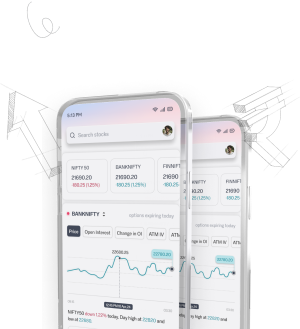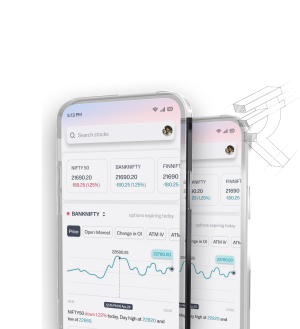Master Options Strategies: Bear Call Spread Options Strategy Guide
The bear call spread strategy is key in options trading. It uses bearish market trends to our benefit. We sell one call option and buy another with a higher strike price, both expiring on the same date. This way, we earn from premiums while reducing the risk of naked calls.
We will explore how this strategy works. We'll look at its mechanics and give an example. This will help us see its value in managing market ups and downs.
Understanding the Bear Call Spread Strategy
The bear call spread strategy is for traders expecting a drop or stability in asset prices. It helps earn while limiting losses. Learning this strategy helps us handle options trading better.
What is a Bear Call Spread?
A bear call spread is a strategy for a bearish market stance. It involves selling one call option and buying another at a higher price. Both options have the same expiry date. This method creates a net credit at the start.
Key Components of a Bear Call Spread
The key components of a bear call spread include:
- The short call option, which we sell at a lower strike price.
- The long call option, which we purchase at a higher strike price.
This strategy's risk is limited. The max loss is the strike price difference minus the net credit. We choose strike prices based on market analysis and conditions.
How it Works in a Bearish Market
In a bearish market, a bear call spread can profit from falling or stable stock prices. If stocks stay below the short call price at expiry, the options are worthless. We keep the net credit. This strategy also benefits from time decay, especially when markets are calm.
Options Strategies Bear Call Spread: A Risk Mitigation Tool
Options trading demands smart risk management strategies. The bear call spread is one such powerful tool. It helps us limit our risks while still aiming for market gains. It's important to understand how it works for a strong trading plan.
The Importance of Risk Management
Good bear call spread risk management is critical in trading. It's safer than naked call writing, which could cause huge losses. This strategy lets us trade with more confidence, even when markets are up and down.
Comparison with Naked Call Writing
The bear call spread is safer than naked call writing. Naked calls can lead to endless losses if prices jump. But the bear call spread limits losses. It gives us a clear, safe way to make premium income. So, the advantages of bear call spread are its clear risk limit, making it great for careful traders.
When to Use a Bear Call Spread
Learning when to use a bear call spread is key in options trading. It's great for certain market situations. It can really improve how we trade.
Identifying Market Conditions
We use a bear call spread when we think a stock will go down a little. High volatility and bearish feelings are our go-to signals. These hints are vital for doing well.
Situations Favoring a Bear Call Spread
Certain times are perfect for the bear call spread. It's best when call prices are high due to lots of market activity. It's also good when markets drop after a small rise. This way, we take less risk. But, we should not use it if we see a big drop coming. Then, a bear put spread could work better.
Calculating Bear Call Spread Profit and Loss
It's key to know how to figure out profit and loss in bear call spreads. This method involves selling one call option and buying another with a different strike price. Both options expire on the same date. Knowing the limits of what you can gain or lose is crucial. That's why it's important to use a bear call spread calculator.
Understanding Maximum Gain and Loss
The most you can gain is when the call option you sold ends up being worthless. Then, you get to keep the net premium from starting the trade. On the other hand, the biggest loss happens if the asset's price goes over the higher call option's price at expiration.
At that point, the loss is the strike price difference minus the net premium we got. That's why it's vital to grasp the max gain and loss before trading.
Break-Even Analysis of the Strategy
Knowing the break-even point for a bear call spread helps us manage investments better. You find it by adding the net premium to the lower call option's price. Understanding this helps us prep for various market conditions.
This clear knowledge is a big part of planning our strategy and risk control.
Advantages of Using a Bear Call Spread
The bear call spread strategy has many benefits for investors in bearish markets. It helps improve trading skills and our approach to risk. It's a great way to manage risk while trading.
Lower Risk Compared to Naked Calls
Bear call spreads are much safer than naked calls. By selling one call option and buying another at a higher strike, risk lowers. This keeps us safe from big losses in unpredictable markets. We know our maximum loss, offering a sense of security.
Time Decay Benefits
This strategy takes advantage of time decay. The short call option's value drops faster than the long call option. This means we can make more money if the asset stays below the short call's strike. Watching this closely helps us do better over time.
In short, bear call spreads offer more than just good returns. They let us trade with less risk while still having a chance for rewards. Knowing these benefits prepares us to trade with more confidence and a smart plan.
| Advantage | Lower Risk | Time Decay Benefits | Capped Profit and Loss |
|---|---|---|---|
| Description | Limits maximum loss compared to naked calls, providing a controlled risk environment. | The short call loses value faster than the long call, enhancing profitability when the underlying asset remains below the short call's strike price. | Both profit and loss are limited, allowing for more predictable outcomes. |
Bear Call Spread vs. Bear Put Spread: Choosing the Right Strategy
Choosing between the bear call spread and the bear put spread depends on our market view and risk level. The bear call spread fits slightly bearish markets well. It lets us earn from option premiums while controlling our risk. The bear put spread is better for bigger drops in asset prices, offering more profit chances.
The bear put spread involves buying a put option close to the current price and selling one further away. This approach works well in mildly bearish markets. It costs less upfront and can still make money if prices drop slightly. But, the profits are limited and there's a chance to lose all we paid if prices go up unexpectedly.
Our choice relies on our market predictions. If we expect a big decrease, the bear put spread is the way to go. But if the market might not change much, yet we think it will fall a bit, the bear call spread is smarter. Knowing the differences between these strategies helps match our trades with our goals and what we think the market will do.
FAQ
Q: What is a bear call spread?
A: A bear call spread is a way to make money if the market goes down. You sell a call option at a low price. And buy another at a higher price, which limits how much you could lose.
Q: How can we use a bear call spread?
A: We start this trade when we think stock prices will drop a little. By selling a low priced call option and buying a higher priced one, we get some money. This comes with little risk.
Q: What are the advantages of a bear call spread?
A: The main benefits are lower risk and capped losses. Plus, we can make money from time going by. It helps us manage ups and downs in the market.
Q: How does the bear call spread work in a bearish market?
A: In a bearish market, this strategy lets us make some income while keeping risk low. We make money if the asset's price stays below a certain level by the deadline.
Q: What do maximum gain and loss look like in a bear call spread?
A: The most we can earn is the initial money we get. The biggest loss happens if the asset's price goes above the high strike price. But, this loss won't go beyond a specific amount, thanks to the premium we received.
Q: What conditions should we look for when considering a bear call spread?
A: We look for this setup when the market is jumpy and we expect a small drop. We also want high option prices and a general bearish mood in the market.
Q: How does a bear call spread differ from a bear put spread?
A: The bear call spread is best for a slight bearish view to make money off premiums. A bear put spread is better when expecting bigger price falls. It can bring more profit.
Disclaimer
The content provided is for educational purposes only and does not constitute financial advice. For full details, refer to the disclaimer document.


